Caution: Some Pictures of this post can be disturbing !
Before writing about this destination,The Killing Fields near Phnom Penh, Cambodia, I just want to share the famous Pale Blue Dot image of planet Earth taken in 1990 by the Voyager 1 spacecraft from a record distance of 6 billion kilometers. This image shows our planet Earth as a tiny dot (.12 pixel in size) against the vastness of space.

I also wish to share a quote made by Late Carl Sagan in his famous book Pale Blue Dot: A Vision of the Human Future in Space:
The Earth is a very small stage in a vast cosmic arena. Think of the rivers of blood spilled by all those generals and emperors so that in glory and triumph they could become the momentary masters of a fraction of a dot. Think of the endless cruelties visited by the inhabitants of one corner of this pixel on the scarcely distinguishable inhabitants of some other corner. How frequent their misunderstandings, how eager they are to kill one another, how fervent their hatreds.
Why I shared this image and quote? Because, my current destination, The Killing Fields near Phnom Penh, is a silent symbol of that cruelty, brutality, killings and hatred against the mankind, so that someone could become the momentary master of a fraction of that dot. I heard and read a lot about the Nazi Camps of Hitler, Cruelty of Stalin, Wars fought around the world, Terrorist Attacks, Riots and Human Slaughter, but never felt their impact so closely. Reading about such places is a different thing, but going there to explore them and interacting to the people who have impact of those events on their life is totally a different thing.
Before going to The Killing Fields, I was enjoying my 5-days stay in Cambodia. Visiting the ruins of Angkor Wat Temple was really an amazing feeling. Cambodian countryside is very beautiful, people are very warming and friendly, APSARA Dance is superb and cuisine is mouth-watering. I spent three most enjoyable days in Siem Reap. Then because of the Thai Visa issue, I moved to Phnom Penh, which was not a part of my initial itinerary. I reached there in the evening and had a beautiful evening at the bank of mighty Mekong River. Weather was perfect with light drizzle and Royal Palace looked very beautiful in the night.
Next Day, I had my flight from Phnom Penh Airport at 3 PM, so I decided to explore the nearby famous (or infamous!) Killing Fields, which is approx. 15 kms away from the city center. I negotiated with a tuk-tuk driver (8.00 USD including a trip to The Killing Fields, 2 hours waiting there and then drop to the Airport), hired a guide, a Cambodian girl (5.00 USD), and went to The Killing Fields, still unaware of what did it hold for me.

Officially The Killing Fields near Phnom Penh is also known as Choeung Ek Genocidal Center. It is basically one of the many killing fields spread all over Cambodia where mass killing took place during the Khmer Rouge Regime. Entry is free for The Cambodian Citizens, but foreign nationals are required to buy a ticket of 2.00 USD (The ticket price is now increased to 5.00 USD). Camera is free of charge and photography is allowed inside the center. Audio Guides are also available at the ticket counter without any charge.
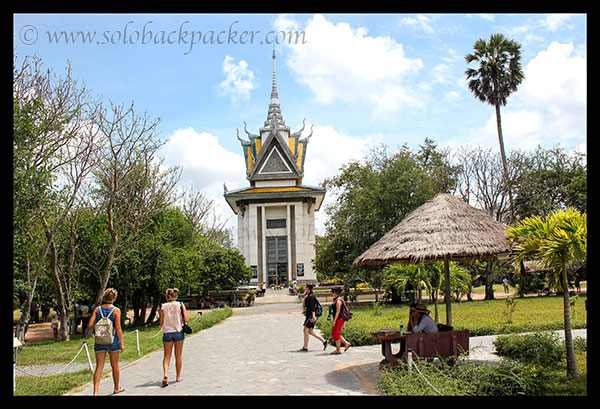
Moving ahead from the ticket counter, we came across a sign-board prohibiting loud conversation and music inside the center. Walking several more steps, there was a huge towering structure looking very beautiful from the distance. But as we reached near that memorial tower or Stupa, we found that it was full of human skulls at every level. The memorial stupa is astonishing, I mean wherever you see from top to bottom you see only human skulls! Some 5000 human skulls displayed behind the acrylic glass windows at 12 floors, and at the bottom level, there is a pile of blood soaked clothes of the victims recovered from the graves. I never imagined that before, but it was not the imagination, it was a reality, a harsh reality. The whole scene looked tragic, but the worst feeling was that it all happened just 36 years ago !
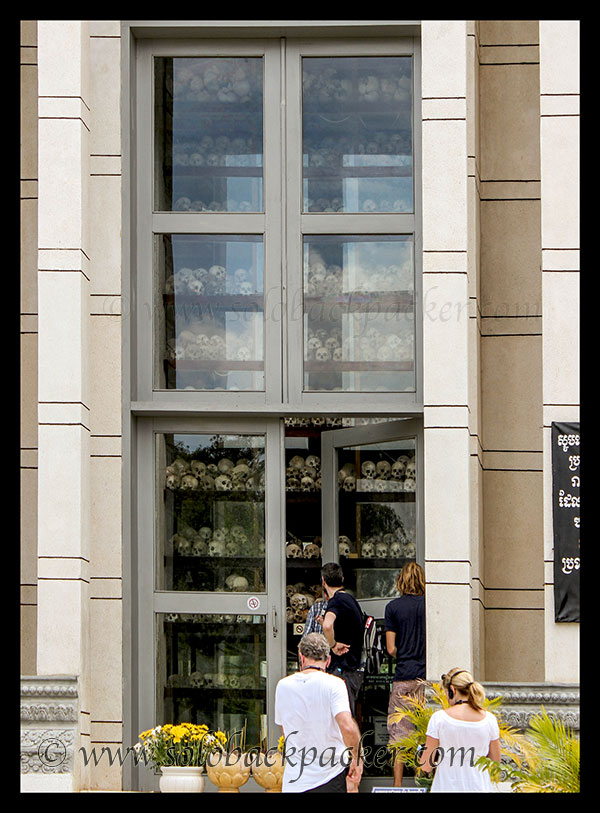
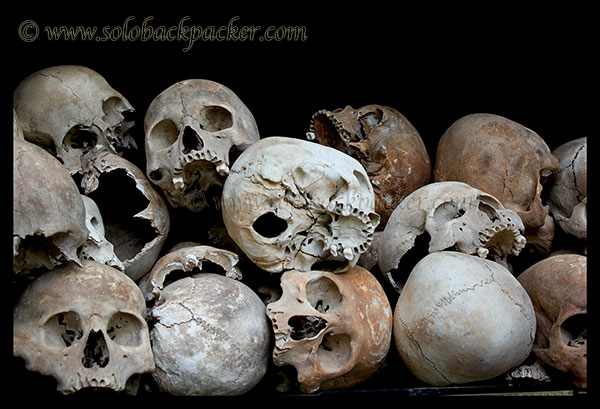
Story of The Khmer Rouge: The story of this brutality started in 1975 when Khmer Rouge Army led by Pol Pot, a Cambodian Communist Revolutionary, took over the control of the capital, Phnom Penh and slowly all Cambodia. After getting the control of all Cambodia, he imposed Year Zero Policy in the country, which he renamed as Kampuchea. The idea behind Year Zero was that everything, related to daily life, habit, work, culture, tradition or whatever practices were there in the society would be destroyed to start a new life from the scratch. Khmer Rouge regime forced people to move out from the city in to the agricultural fields. The reason given to them behind that mass evacuation was the suspected bomb threats from The US Bomber Aircraft and they were also told that the evacuation was only temporary. They were advised to move out without taking much belongings as they were supposed to return in just 2-3 days. But whoever evacuated their houses, never came back again. Almost all of Phnom Penh city was deserted and people were forced to work in the Cambodian Fields, where they were treated badly and tortured heavily.
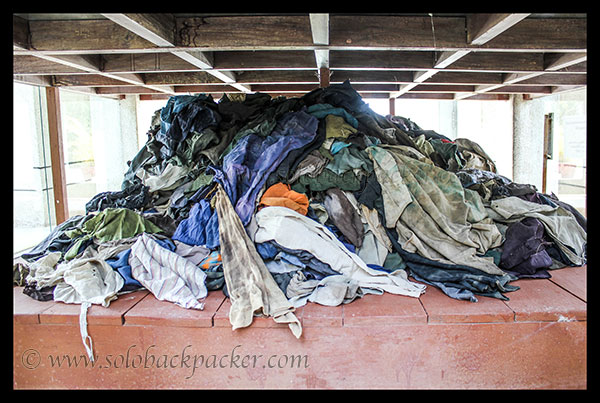
Khmer Rouge targeted every people in the society who had some sort of intellectual ability or professional education. They looked out for musicians, writers, doctors, lawyers, teachers etc and killed each and every person. and their criteria of finding such people were also amazing, for example: 1. People who wore glasses, must be literate. 2. People who had smooth hands, must be educated because if they worked in the fields, their hands would be rough.
They specifically searched out for ethnic Chinese, ethnic Thai, ethnic Vietnamese, Muslims, Buddhist Monks and other minorities leaving in Cambodia and killed them all. Many westerners took shelter in French Embassy, but after few days, Khmer forces put everyone in the trucks and left them at Thailand Border for safe passage. Cambodian women married to foreign nationals were allowed to go with their husbands, but Cambodian men married with foreign nationals were not allowed to go.
Those who stayed back wishfully or forcefully in Cambodia were forced to relocate in the agricultural camps, where they were treated like animals or even badly. They were hungry, weak, ill, but they were not allowed to produce some foods for them even near their houses, they were not allowed to get any treatment and they were subjected to brutal tortures. Public properties were captured, schools and bank were shut down and currency was abolished.
Those who were unable to work or those who protested against the Khmer Rouge, were either killed or beaten to death. Majority of the people were brought here from nearby Tuol Sleng Detention Center. They silently brought them in the late evening, only to kill them to death and nobody working around those field were aware of this game. To save the ammunition and bullets, they were killed by using spades, axes and hammers ! Children were smashed against the trees, so that they could not take the revenge after getting older. After death, they were thrown in to the nearby pits. To suppress the noise and moaning of the victims, they hanged loudspeakers on the tree and played local Khmer music at a loud volume on them. To hide the smells out from the body lying in open pits, they sprayed chemicals!
The same story continued for 4 years, until 1979, when Vietnamese Army stormed in Cambodia to end the rule of Pol Pot and his Khmer Rouge. Many people were still unaware of whatever had happened there in past four years. It was only after the fall of Khmer Rouge, when in the following year, heavy rain eroded some soil from the mass graves of people, this site of Killing Fields was discovered and the world came to know about that genocide.
From that time onwards, about 20,000 mass graves have been discovered in all over Cambodia. Various studies have estimated the death toll at between 740,000 and 3,000,000, with perhaps half of those deaths being due to executions, and the rest from starvation and disease. It was almost 25-30 percent of the total population of Cambodia. Almost every family of Cambodia lost at least one member during the Pol Pot dictatorship.
Note: In 1984, Director Ronald Jaffe made an amazing movie on the history of The Killing Fields. This movie ” The Killing Fields” is highly recommended to watch out, if you wish to see the terror of The Khmer Rouge. This movie is based on the real experiences of two journalists: Cambodian Dith Pran and American Sydney Schanberg, who were there in Cambodia during the time of The Khmer Rouge.
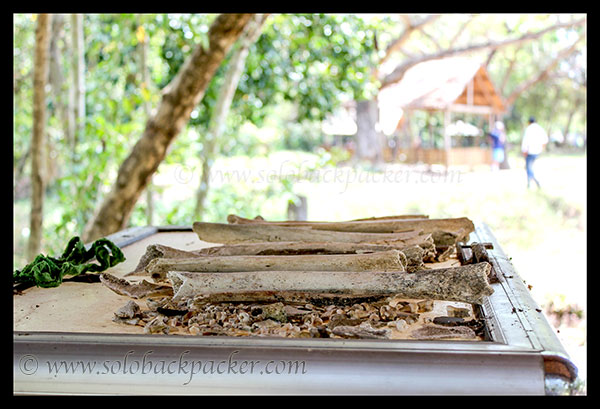
Walk anywhere in the Choeung EK Center and you will come across some graves of victims. Large number of bodies are still buried in the pits. Even today, when heavy run occurs, these clothes, bones or jaws re-surfaced and the memorial people collect them to keep at the proper place. There is a high chance, while walking in the fields you come across a bone, a blood-stained clothes or a skulls.
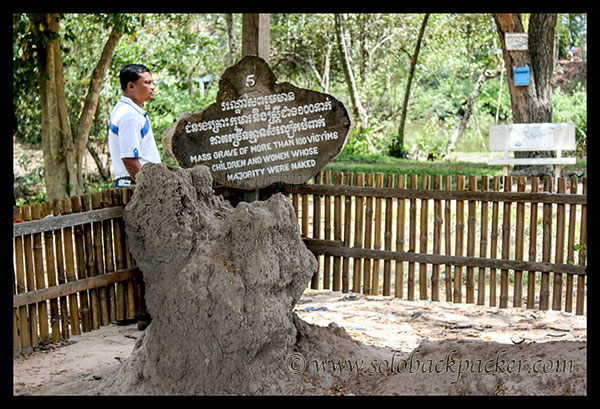
If you look at the countryside around the killing fields, it looks amazing. The blue sky, the water-filled farms of rice, beautiful trees all turn this area into in amazing landscape, but the past of this place makes it a haunted place.
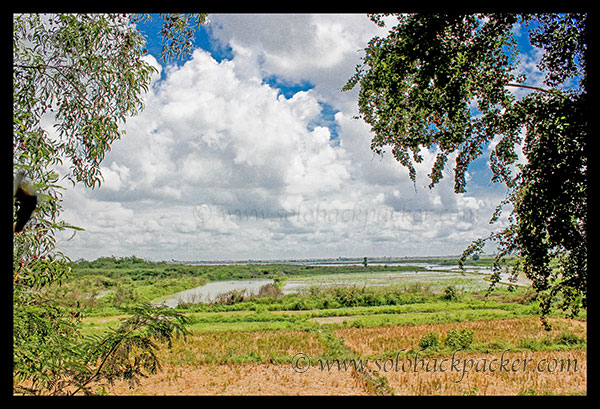
My guide was silent during the whole trip. When I asked her, what she think about this place, she said she don’t know…She don’t know if her grandfather was also among those poor people, who were killed there. This is not the story of her only, this is the story of every other Cambodian People. At least one-fourth of the country’s population were killed at different places during the Khmer Rouge. One-fourth population of a country! can you imagine? I don’t know if Hitler’s and Stalin’s massacre were at this scale.
Walking further we reached near The Killing Tree. It was the same tree , where they banged the small children by holding their legs on that tree to kill them , so that they could not remain alive to take any type of revenge in the coming future. I was totally shocked.
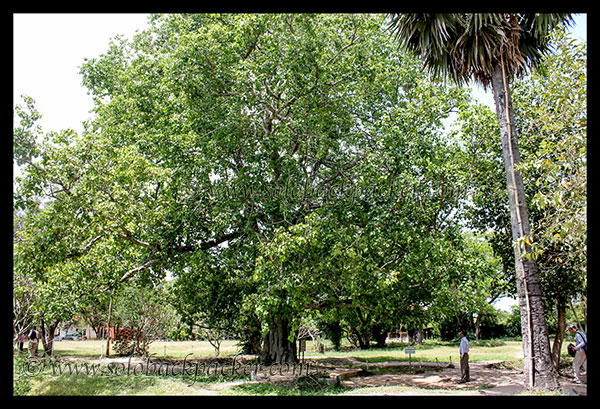
There is also a museum in a corner of this memorial site. This museum has a detailed presentation on the discovery of killing fields, its history, its traitors and tools used during those killings.
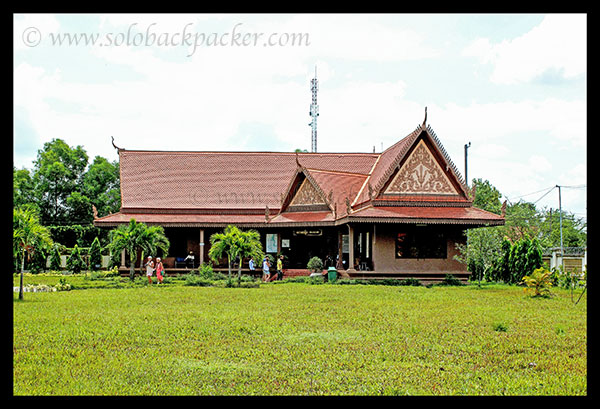

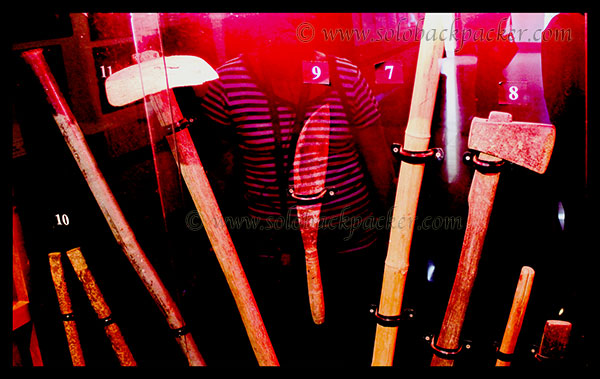

What happened to Khmer Rogue Leaders ? Despite its fall from the power, the Khmer Rouge retained its seat in UN till 1993 and represented Cambodia in the United Nations under different names. Pol Pot died in April 1998. By 1999, most members of Khmer Rouge had surrendered or been captured. Trials are still going on some Khmer Rouge Leaders under the charges of crimes against humanity, war crimes and genocide. Most of the surviving Khmer Rouge leaders still live in the Pailin area or are hidden in Phnom Penh. (Source: Wikipedia)
Visiting Choeung Ek Memorial Center was really a harrowing experience. But, I feel it is very important to see these type of sites, to acknowledge and to accept that they do exist on the earth, in the middle of this civilized society and to make people aware of what happened at these places and to make sure that the same thing can be prevented in the future. and It is also important to keep in mind that we still live only on a tiny dot of .12 pixels. May be that tiny dot picture force you to think how small we are in this universe for these hatred, brutality and cruelty.
After visiting the Killing Fields, we came out from the memorial and with a heavy heart, I reached at Phnom Penh Airport to catch my flight to Bangkok.


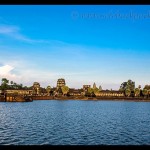
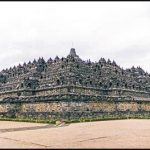
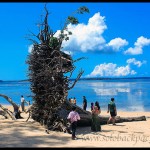
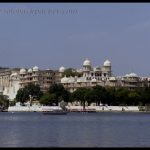
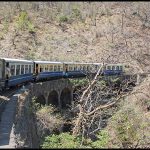
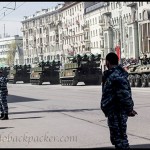
Here are the photos that I took in this place
https://photos.google.com/share/AF1QipPLQjXOpIZkUOygjK49dFZr9rJuiyMRHyc-8BfEmJG02vhoxCg8QyncUoLOm7RxcQ?key=V1pGSmlybzIzVkhraGpwZFRIR2ZKRkowckJBWlJR
Beautiful Pictures.
I have Indian passport and planning to visit Cambodia in April 2017.
1. I plan to fly from Hyderabad to Siem Reap and return from Penom Penh to Chennai. I am going to use VOA option only, I hope there will not be any issues though my entry and exit airports are different. Please confirm.
2. Mostly I will go alone only. Is a guide really needed for Angkor?
3. What would be the best trasport mode from Siem Reap to Penom Penh? Local bus?
– Gnanasekar
1. I plan to fly from Hyderabad to Siem Reap and return from Penom Penh to Chennai. I am going to use VOA option only, I hope there will not be any issues though my entry and exit airports are different. Please confirm.
No direct flight is there between Hyderabad-Siem Reap or Phnom Penh-Chennai. So, either fly via Bangkok or KL. Via Bangkok, VOA is easily possible. Via KL, a visa for Malaysia may not be required, but I am not sure on this.
2. Mostly I will go alone only. Is a guide really needed for Angkor?
I don’t prefer them, but they may tell you some interesting stories, that are not the parts of a guide book. A good guide book to know more about Angkor is highly recommended.
3. What would be the best transport mode from Siem Reap to Penom Penh? Local bus?
Bus, of course. Try to book on the previous day of your departure through your hotel/travel agent.
It will be an emotionally challenging experience to see the killing fields .. I have been to Cambodia but visited only Siem Reap. I do not think I will be able to visit this place and not break down
Interesting article.
harsh but true…personally i wouldn’t visit this on a holiday…..
http://www.myunfinishedlife.com